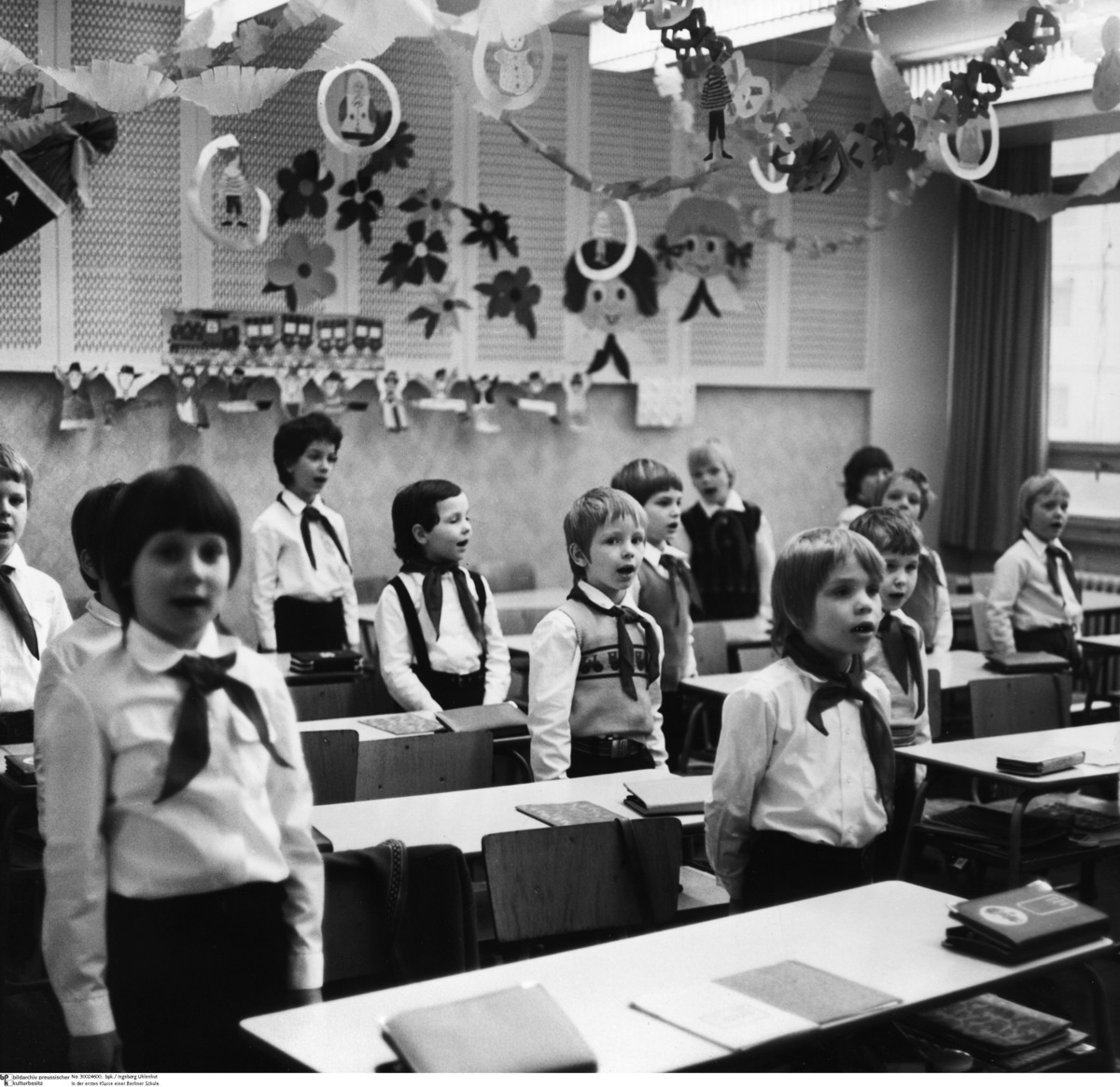Abstract
The “Ernst Thälmann” Pioneer Organization, named after the former Communist Party chairman who was murdered by the National Socialists, was a political mass organization for children between the ages of 6 and 13 conceived as a branch of the East German youth organization FDJ. Pioneers in grades 1 to 3 were called “Young Pioneers,” while those in grades 4 to 7 were called “Thälmann Pioneers.” For uniforms, Pioneers wore white shirts and colored neckerchiefs (blue for Young Pioneers, and, from December 1973 onward, red for Thälmann Pioneers). In addition to its usefulness as an organizational structure, the Pioneer Organization had another important function: to convey an ideological message and an image of the enemy. In doing so, it employed “The Ten Commandments of the Young Pioneers” and the “Laws of the Thälmann Pioneers” (these included, for example, “friendship with the Soviet Union” and “protection of peace” on the one hand, and “hatred against the warmongers” on the other). While membership was formally voluntary, the state and school system took it for granted. Therefore schools usually applied for membership for an entire class of students. According to official statistics, at the beginning of the 1980s, 99% of children between the ages of 6 and 13 were “voluntary” members of the Pioneer Organization.
